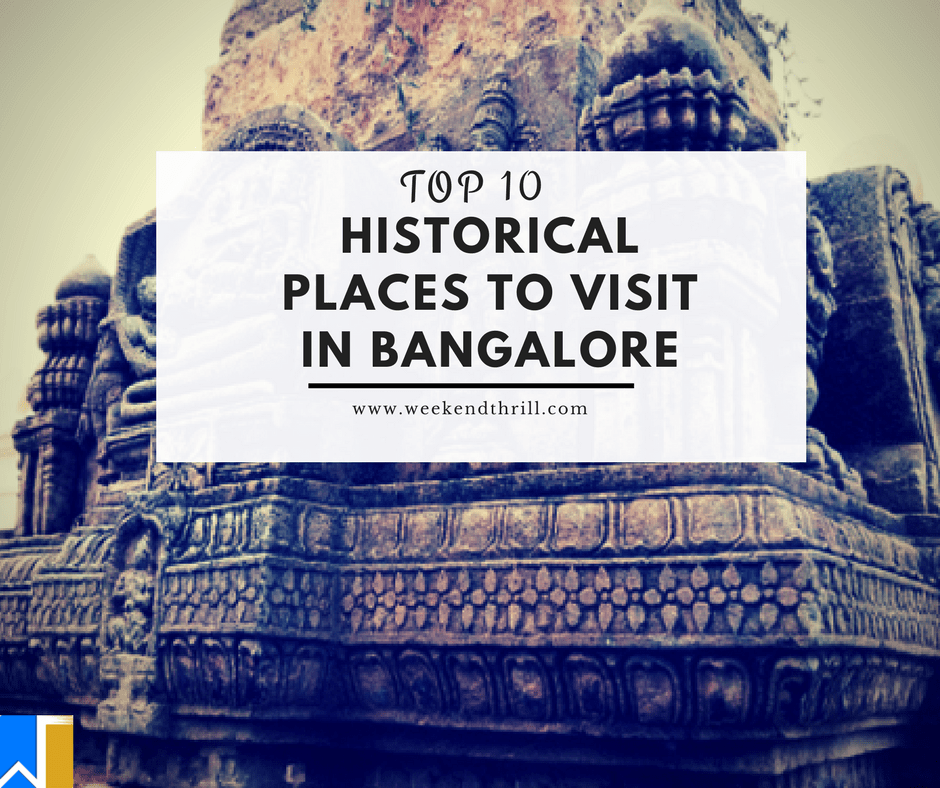The ‘Garden City of India’ has various well-preserved monuments what tell you the tales of its becoming. The cultural heritage of Bangalore is constructed by contributions and influences of successive dynasties that ruled such as Kadambas, Hoysalas, Chalukyas and the Vijaynagar Empire. The Mughals and British ruled here too. So here are a few historical Places to visit in Bangalore for you to understand its history.
Historical Places to Visit in Bangalore
-
Bangalore Fort
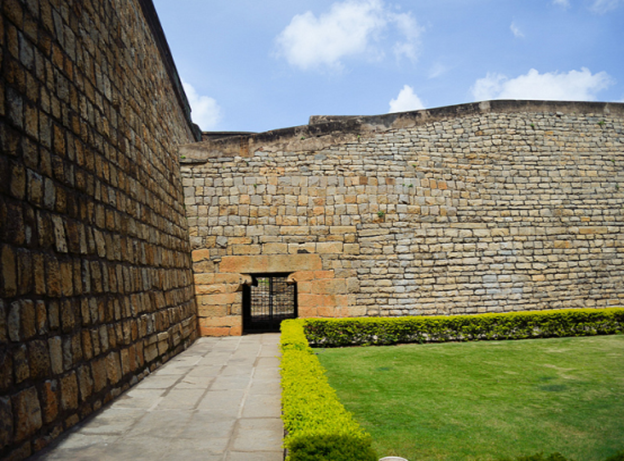
Source: flickr.com
---------------------------------------------------------
Best Deals for the MonthThe Bangalore Fort was constructed in 1537 and started off as a mud fort. It was built by Kempe Gowda l, the founder of Bangalore. Haider Ali replaced the mud fort with a stone fort in 1761. It was later conquered by an army of the British East India Company on 21st March 1791 during the Third Mysore War. Now, all that remains of the fort is the Delhi Gate and remnants of two bastions.
-
Devanahalli Fort

Source: flickr.com
Located 35 kms north of the Bangalore city, Devahahalli Fort is a great example of extensive battles fought for the rule of bangalore. Originally built in 1501 by Mallabairegowda, it was attacked and conquered by Nanjarajaiah, the then Dalwai of Mysore. It was later passed on to Hyder Ali and subsequently to Tipu Sultan, the Tiger of Mysore. The birth place of Tipu Sultan is located near to the fort. The fort is spread over an area of 20 acres. The entrances are decorated with cut plasterwork. The house in which Tipu Sultan and Hyder Ali lived still exist. The fort also contains many temples like The Venugopalaswamy Temple, Garuda Stamba, Chandramouleshwara Temple.
-
Gavi Gangadhareshwara Temple

Source: flickr.com
Gavi Gangadhareshwara Temple, also known as Gavipuram Cave Temple, is an excellent example Indian rock-cut architecture. Constructed in 16th century by Kempe Gowda l, the temple is famous for its mysterious stone disks in the forecourt. The temple experiences a major footfall on Makarsankranti every year. This is a special day because when the sun rays fall on the shivling for 1 hour as it passes through the horns of the Nandi. Such was the skill of then architects and astronomers that they could carve the horns of the stone bull outside the temple so that the sun’s rays would pass through them and light up the shivling inside the cave.
-
Shravanabelagola
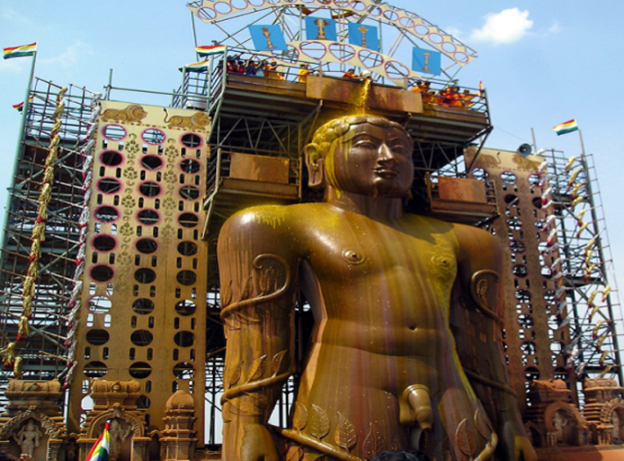
Source: flickr.com
It is a town located in Hassan district of Karnataka, 144kms from Bangalore. Chandragupt Maurya and his mentor Acharya Bhadrabahu are believed to have meditated here in the hills of Chandragiri and Vidhyagiri. Chandragupt Maurya is said to have died here in 298 BCE after he became a jain monk. The place has great historic value as it contains one of the most important tirthas of Jainism. The 58-feet tall monolithic statue of Gommateshwara, the world’s largest monolithic statue, is located on Vidhyagiri hill in Shravanabelagola. Every twelve years, thousands of jain devotees gather here to perform the Mahamastakabhisheka, a ceremony in which the statue is anointed with a mixture of turmeric, water, rice flour, sugar cane juice, sandalwood paste, saffron.
-
Tipu Sultan’s Summer Palace
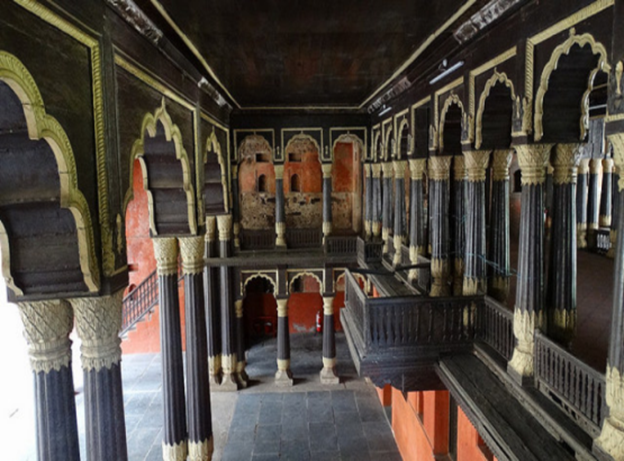
Source: flickr.com
Tipu Sultan’s Summer Palace is an example of Indo-Islamic architecture and was the summer residence of the Mysore ruler Tipu Sultan. Hyder Ali commenced its construction in 1781 and it was completed during the reign of Tipu Sultan, in 1791. The emperor referred to it as the ‘Rash-e-Jannat’ which means the abode of happiness and envy of heaven. This beautiful monument has elaborate arcs and paintings on the walls and on the ceilings, creating a breathtaking interior for the visitors. It is believed that Tipu Sultan used to conduct his durbar from the eastern and the western balconies of the upper floor. Now, it has been converted into a museum and is maintained by the Archaeological Survey of India.
-
Srirangapatna
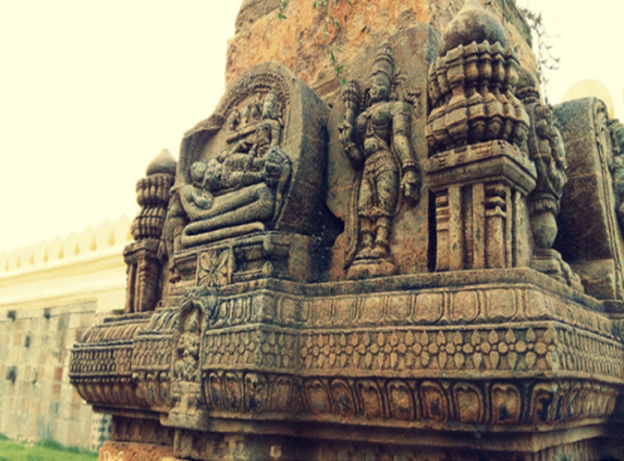
Source: flickr.com
Geographically, Srirangapatna is a rocky island formed by Cauvery river. The religious history of Srirangapatna dates back to 9th century AD when the Ganga Dynasty ruled this reign from their capital at Talakkadu. Hyder Ali and his son Tipu Sultan converted this area into a fortified city and rose it to prominence. This island has numerous religious and historic monuments. The town gets its name from the famed Ranganathaswamy Temple which dominates which dominates the town, making it one of the most important Vaishnavite centres of pilgrimage in South India. Other monuments include Tipu Sultan Gubaz, Daria Daulat Bagh, Wellesley Bridge.
The monuments on this island have been nominated as a UNESCO World Heritage Site.
-
Bangalore Palace
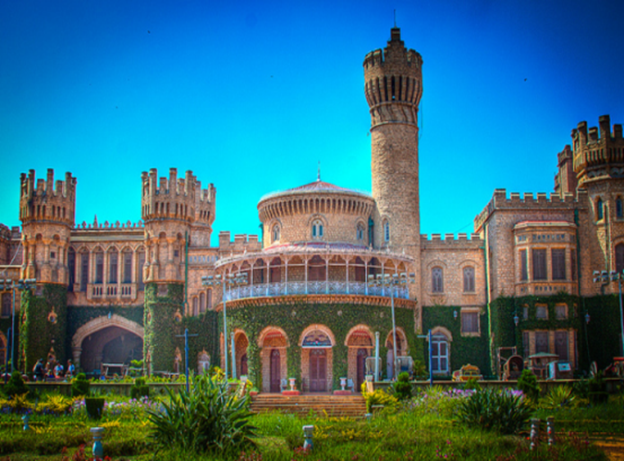
Source: flickr.com
This magnificent palace is a perfect embodiment of architectural beauty. Chamarajendra Wadiyar’s British Guardians bought the original property in 1873 from the principle of Bangalore Central High School. The palace was completed in 1874. The bangalore Palace is spread across 45,000 square feet. The wooden structure of the palace and impressive carvings inside and out makes it a distinctive building style. The building also contains a ballroom for holding private parties. The palace was built in Tudor style architecture with fortified towers, battlements and turrets. The interiors were decorated with elegant wood carvings, floral motifs, cornices and relief paintings on the ceiling.
-
Chennakesava Temple, Somnathpur
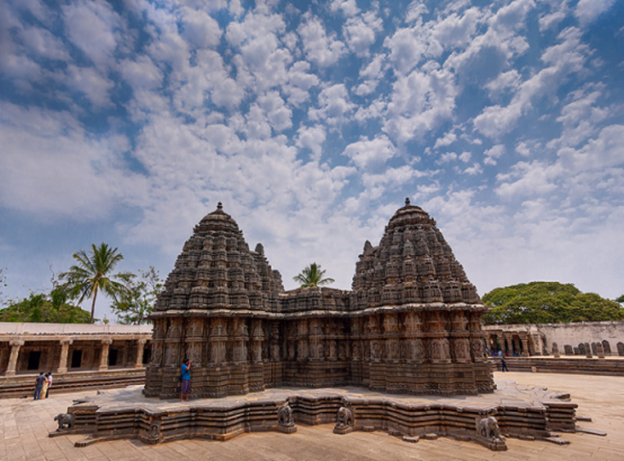
Source: flickr.com
Also referred to as the Keshava Temple or Kesava Temple, it is a Vaishnava Hindu temple on the banks of river Kaveri at Somnathpura, about 137 kms from Bangalore. It was constructed in 1258 CE by Somanatha Dandanayaka, a general of the Hoysala King Narasimha lll. The temple is a perfect example of Hoysala architecture. The northern and southern row of small shrines inside the pillared courtyard corridor consists of 18 single shrine and one linked-double shrine each. The intricate carvings on inside and outside walls, pillars and the ceiling of the temple refer to the theological iconography of Hinduism and display Hindu texts such as Ramayana, Mahabharat and Bhagwata purana.
-
St. Mark’s Cathedral
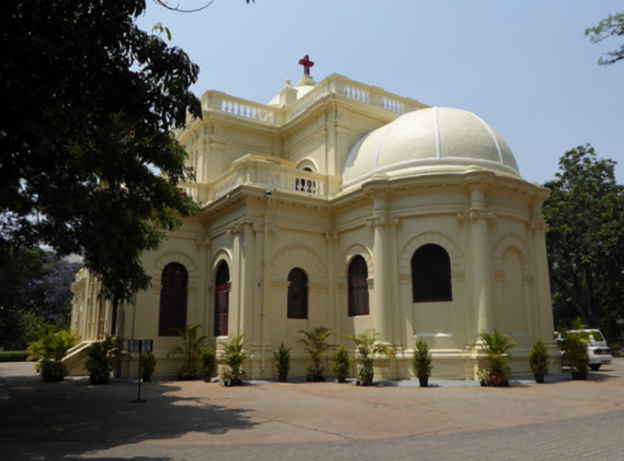
Source: flickr.com
St. Mark’s Cathedral was constructed in 1808 and is named after Saint Mark, who is believed to be the first gospel writer. The church had a seating capacity of 400. As a result of the increasing numbers of members, a new building was constructed in August 1902. The exuisit architecture of the cathedral is inspired by the 17th century St Paul’s Cathedral, London. The church has beautiful woodwork, ornated carvings that are coupled with excellently done ceilings and domes. It also exhibits some amazing stained glass work.
-
Cubbon Park
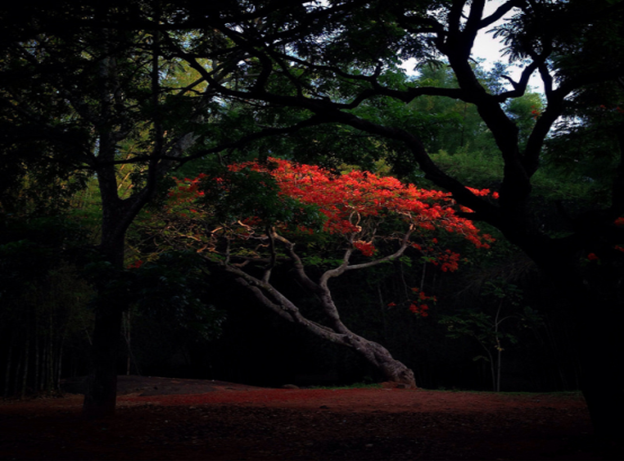
Source: flickr.com
Officially called Sri Chamarajendra Park, the park is a landmark ‘lung’ area of Bangalore. This place is a noteworthy touring fascination, with 300 sections of land of green foliage. It was created in 1870 when Major General Richard Sankey was the then British Chief Engineer of Mysore state. A total of around 6000 species of plants and trees are indigenous to this area. These include artocarpus, cassia fistula, ficus, etc and exotic species such as bamboo, grevillea robusta, milletia. The predominantly green area of the park has many motorable roads, and well-laid-out walking paths running through the park.
Hope our blog on Historical places to visit in Bangalore gives you a brief idea about the heritage oh bangalore
Also check out:
7 PLACES TO VISIT AROUND BANGALORE IN EARLY MORNING

